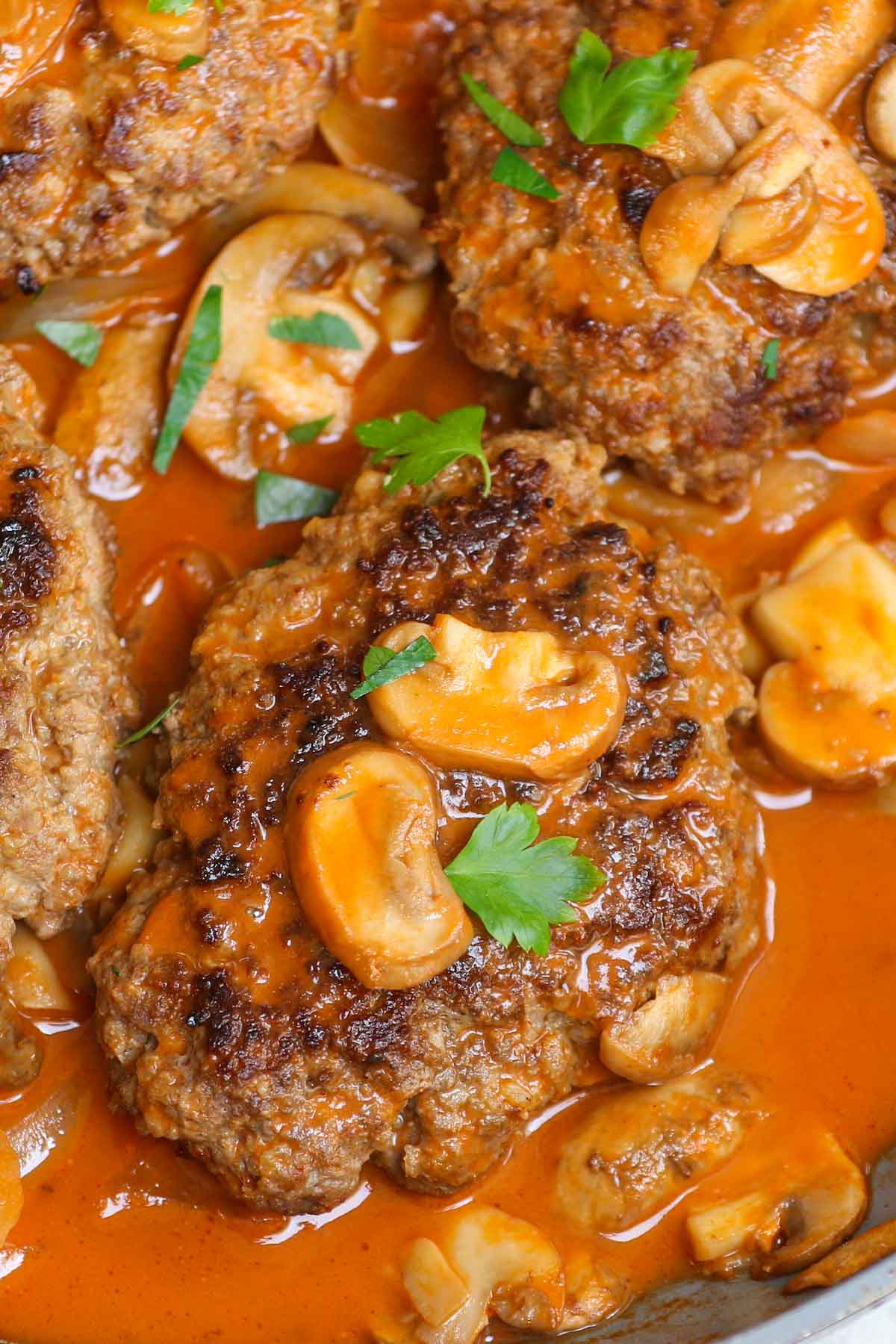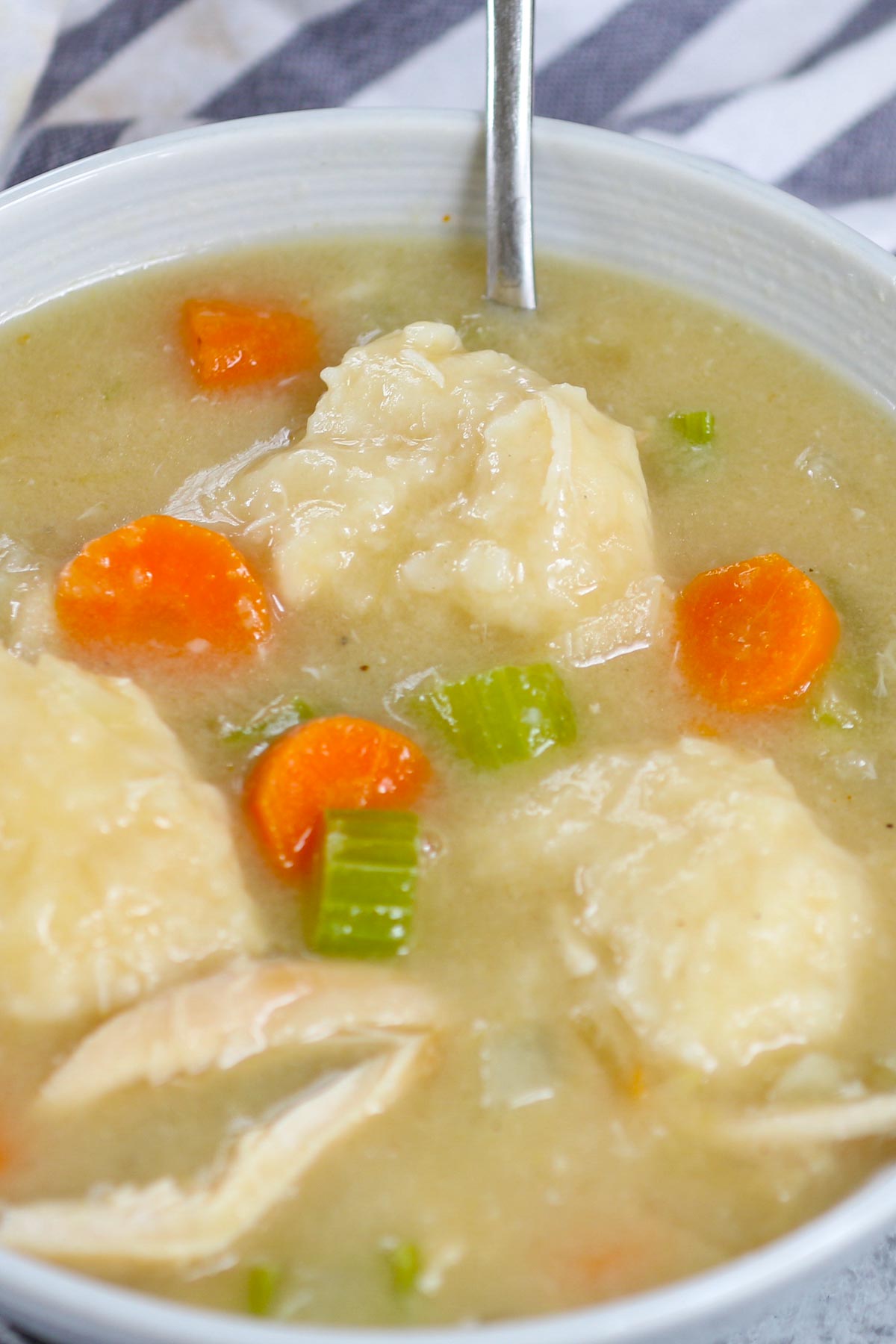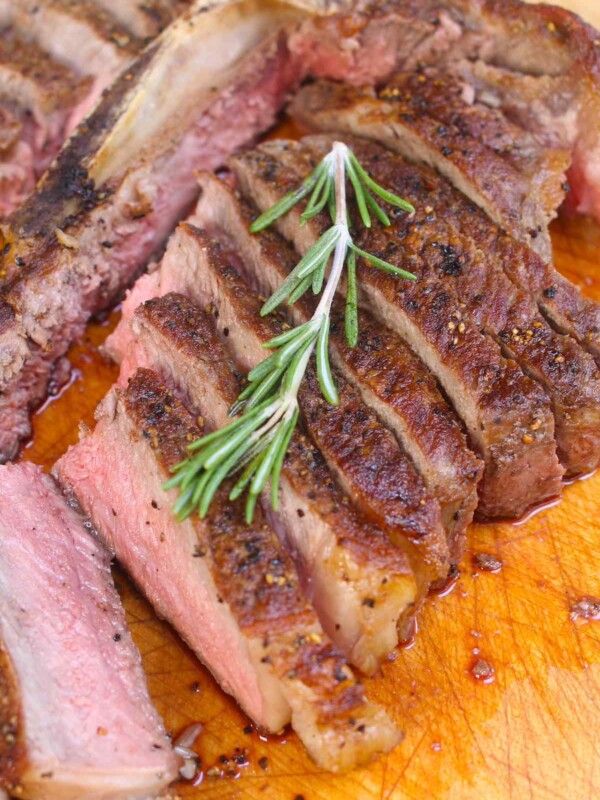Korean Jajangmyeon Instant Black Bean Noodles
on Mar 04, 2022
This post may contain affiliate links. Please read my disclosure policy.
Korean Instant Jajangmyeon Black Bean Noodles are one of the most popular dishes in Korea. They’re rich, full of flavor, and make for quick meals. These noodles are coated and tossed in a smooth, savory, umami-flavored black bean sauce along with diced pork, zucchini, and onion.

You can also use instant udon noodles if you’d like to save on the cooking time.
What is Jajangmyeon?
Jajangmyeon is a flavorful noodle dish that’s smothered in a savory black bean sauce. It’s a lesser-known hybrid between Korean and Chinese cuisine that was developed in the 19th century by early Chinese immigrants in Korea.
The noodles used in this dish are fresh udon noodles which are thick and wheat-based. The base of the sauce is Korean black bean paste, also called chunjang, which is made from soybeans, flour, caramel and then fermented.
Additional ingredients such as onion, zucchini and pork are sautéed and mixed with the black bean paste. A mixture of cornstarch and water is used to give the sauce its thick gravy-like consistency to ensure the noodles are fully coated.
Different Types of Jajangmyeon
There are four main types of jajangmyeon so you’re sure to find one that suits your taste and diet.
- Ganjjajangmyeon: This is a dry version of the dish in which the water and the cornstarch slurry are omitted. You get less sauce and more of the meat and vegetable mixture being coated in black bean paste.
- Samseon jjajangmyeon: If you’re a seafood lover then you’d be sure to enjoy this variety. This is a popular version of the dish that substitutes the pork for a variety of seafood such as shrimp, squid, and sea cucumbers.
- Jaengban jjajang: This is a stir-fried version meaning that the sauce and noodles are tossed together and stir-fried. It’s usually served in a large platter, family-style as opposed to a bowl.
- Jjajangbap: Not a fan of noodles? Then go for this popular version served over rice instead of noodles. This is often made using the dry sauce version (ganjjajangmyeon) mentioned earlier.
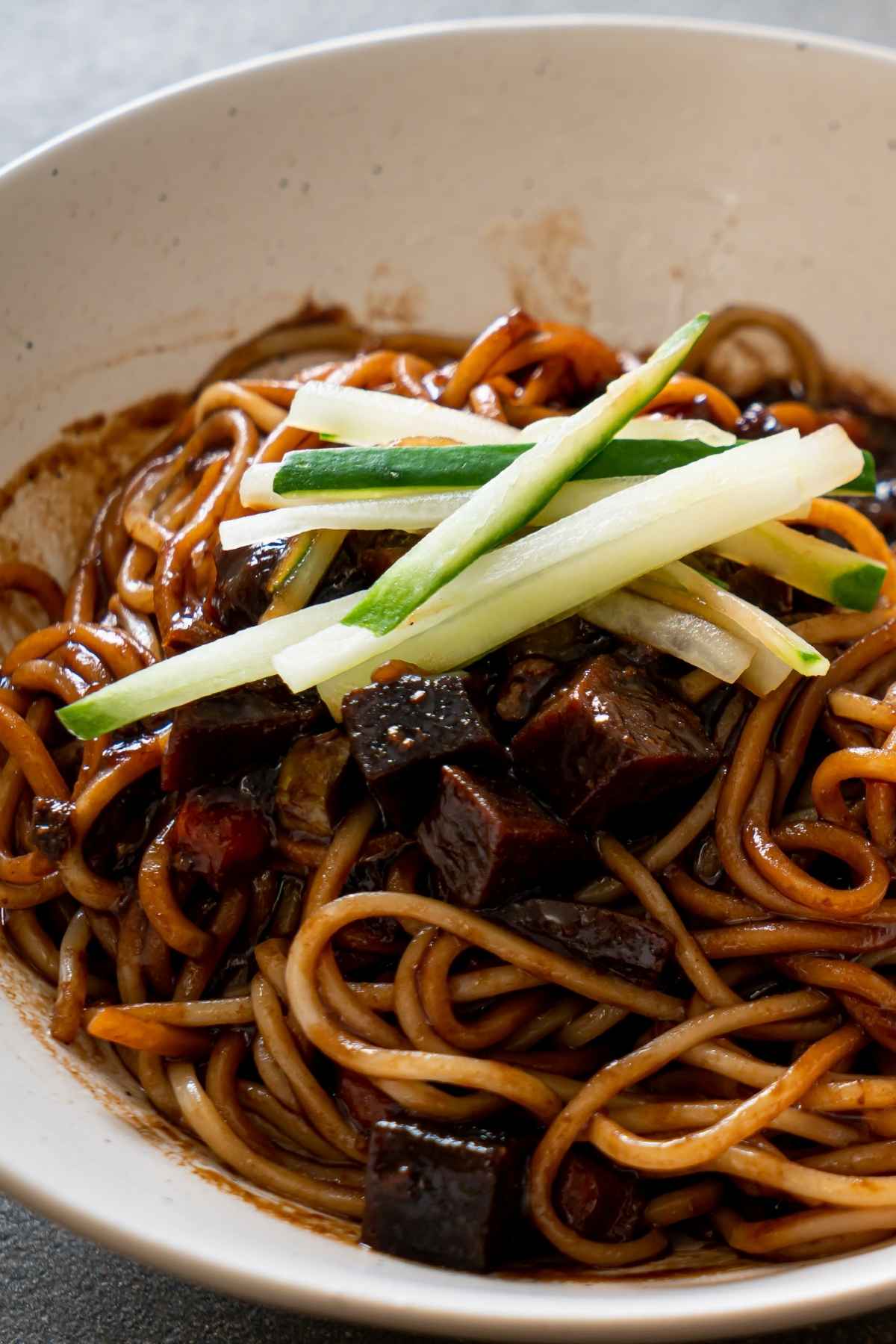
Special Ingredients You’ll Need
Chunjang: Chunjang is a Korean-style black bean paste made of soybeans, wheat flour and caramel that’s then fermented. This gives jajangmyeon its unique taste but has to be toasted first to remove the sour and bitter flavor. It can also be bought pre-toasted so be sure to check labels when purchasing. It can be found at Korean as well as some Chinese grocery stores. Also note that Chinese-style black bean paste should not be used as a substitute.
Udon/Jajangmyeon Noodles: These are thick, wheat-based noodles that can be sourced fresh or frozen and are the best option for jajangmyeon. They can be sourced at most Asian grocery stores in the refrigerated or frozen food sections and will often be labeled as udon noodles or jajangmyeon noodles.
Danmuji: This is a yellow pickled radish that is often served as a condiment or side dish along with many Korean Chinese dishes. Its sweet and sour flavor along with the crisp texture works well with the salty and savory jajangmyeon sauce.
How to Make Jajangmyeon Noodles
With the right ingredients and technique, you can successfully make jajangmyeon at home. Here’s the step-by-step process.
Step 1: Marinate the Pork
Season pork shoulder with spices including mirin, ginger, salt, and pepper. Mix to ensure all pieces are coated. Then set aside to marinate.
Step 2: Make the Jajang Sauce
- Use a large skillet, add some oil and place it over medium heat.
- Once the oil is hot, add black bean paste and sugar and stir together. Continue stirring to cook and toast the paste.
- Once done, pour the mixture into a small bowl until ready to use.
Step 3: Make Jajangmyeon
- Place the skillet back over medium heat, add oil and sauté the marinated pork.
- After a few minutes, add optional shrimp and sauté for a few minutes. Transfer to a plate and set aside.
- Place the skillet back over medium-high heat, and add the remaining oil and sauté the onion.
- Add zucchini and continue to sauté for a few minutes.
- Pour the pork and shrimp or pork only mixture back into the skillet and continue to sauté.
- Stir the toasted black bean paste from earlier into the meat and vegetable mixture until everything is evenly coated.
- Add water a little at a time until the mixture is smooth and simmering.
- Add cornstarch slurry and stir together to thicken the sauce. Remove from heat and keep warm.
- To cook the noodles, fill a large pot with water and place it over high heat. Once the water begins to boil, add noodles and cook through, stirring occasionally. After about 5 to 6 minutes, the noodles will be cooked but still a bit chewy. Drain the noodles and rinse gently. Divide noodles into bowls for serving and top each with the warm sauce.
- Mix the noodle and sauce together and enjoy!
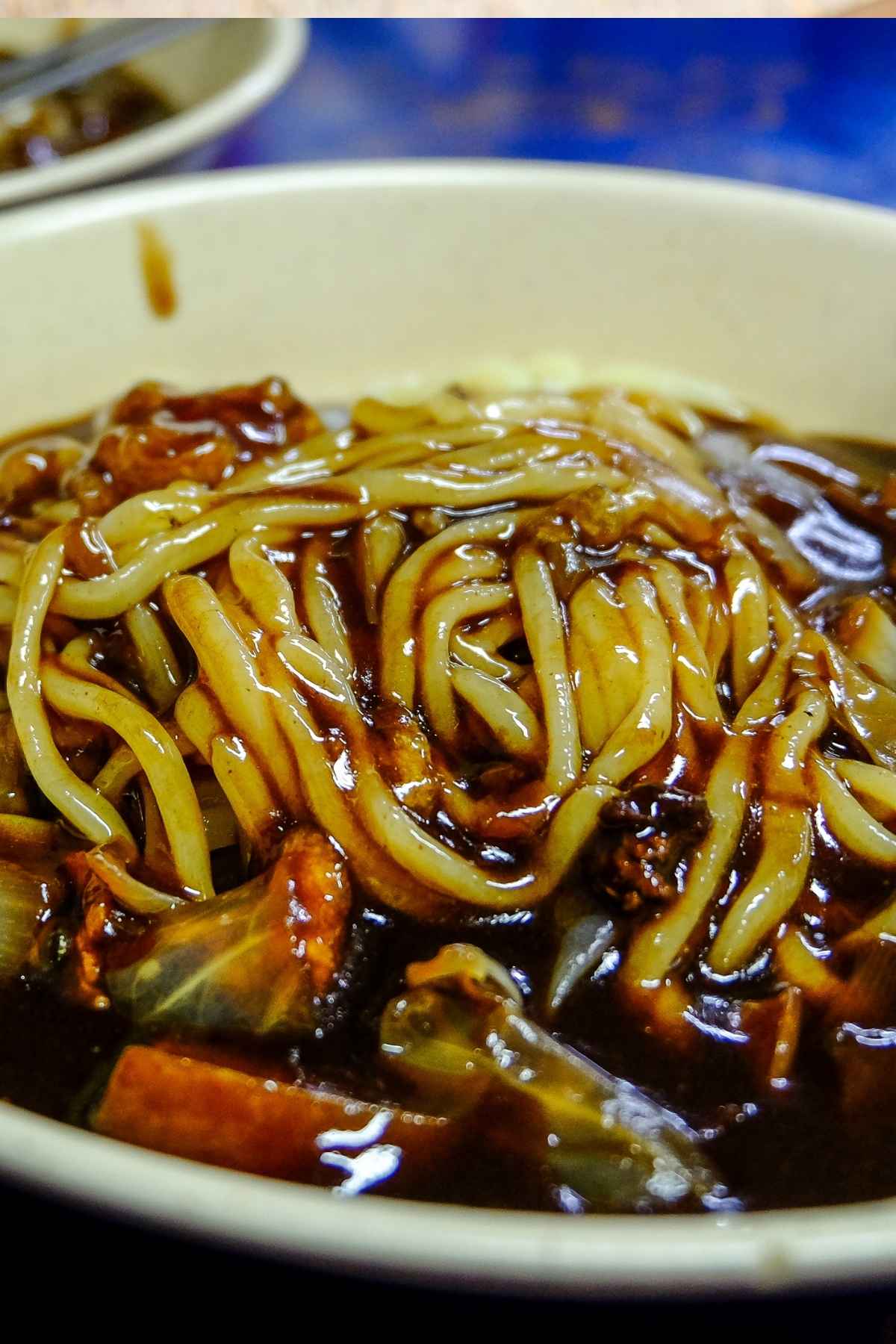
Tips and Tricks for Jajangmyeon Success
- To prevent the chunjang from burning, toast it over low to medium-low heat. If it gets stuck to the bottom of the pan, simply scrape it off as you make the rest of the sauce.
- Typically, jajangmyeon noodles are not spicy but, once you’re up for it, go for a spicier option or add your own spice if making it at home. t
Best Instant Jajangmyeon Black Bean Noodles Options
- Paldo Fun and Yum Jjajangmen Instant Noodle Packs: A traditional, liquid black bean sauce cooked on an open fire mixed with large chunks of meat and vegetables. These include sauce packets to coat your noodles so they’re as close as you’d come to the version you’d find in Korean restaurants.
- Nongshim Chapagetti Chajang Noodles: These are made with a blend of spices, dehydrated carrots and onions, and ground bean grains. Spaghetti-style noodles are covered in a special Chajang sauce made of black beans.
- Samyang Bulldark Spicy Chicken Roasted Noodles: If you love both chicken and spice then this is the best option. It’s delicious, flavorful and with a Scoville rating of 8000 units, it’s definitely packed with spice.
- Paldo Fun and Yum Ilpoom Jjajangmen Chajang Noodles: These noodles are made with mushrooms and black beans making them a suitable option for vegetarians. It’s easy to prepare and ready in just a few minutes.
- Ottogi Jjajang Noodles: For that traditional jajangmyeon taste, go for Ottogi Jjajang Noodles. They contain a unique blend of flavors but it’s a non-spicy option making it perfect for everyone including children.
Is Jajangmyeon Popular In Korea?
- Yes! Jajangmyeon is a hybrid between Chinese and Korean cuisine and is therefore served in the majority of Chinese restaurants in South Korea. Its popularity among Koreans continues to grow over the years and even extends beyond the region as it gains more interest online. a
Sauce Variations
Jajangmyeon sauce can be made in a variety of ways depending on one’s preference. Here are some of the most common and popular ones:
- Jajangmyeon is often served garnished with julienne cucumber. The cool, mild flavor and crisp texture work well in this savory dish.
- Add some heat and spice to the sauce with gochugaru, a Korean chile pepper. For a vegetarian option, use tofu or mushrooms (or both) and omit the pork and shrimp.
- In addition to zucchini, other popular and commonly used vegetables in jajangmyeon are diced potatoes, diced carrots, peas, chopped green cabbage, and corn.
- Instead of pork shoulder, you can use diced pork belly. They both work well in this dish so it’s a matter of preference.
What Does Jajangmyeon Taste Like?
Usually, instant jajangmyeon black bean noodles are a delicious combination of flavors that are deep, salty and sweet all together and that brings out umami. Spicy varieties have a delightful kick that can balance the sweetness and lift greasy noodles.
What is the texture of Jajangmyeon noodles?
The texture varies based on the brand, however, the noodles should retain a good bite as you’re eating them while also being a bit chewy and bouncy.
Are Instant Jajangmyeon Noodles Spicy?
Traditionally, jajangmyeon noodles are a sweet and savory dish made with a blend of spices but they aren’t spicy per se. This makes it a popular family favorite dish.
However, there are different varieties, some of which may be spicy. When buying jajangmyeon noodles, checking the list of ingredients is the best way to determine if they may be spicy or not. When making it at home, add spice to taste if preferred.
You May Also Like
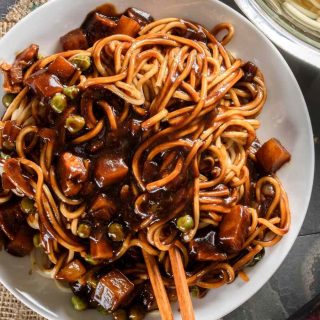
Jajangmyeon Noodles Recipe
Ingredients
- 2 pound diced, boneless pork shoulder
- 1 tablespoon mirin
- 1 teaspoon minced ginger
- Salt and black pepper, to taste
- 3 tablespoons vegetable oil, divided
- 1/2 cup chunjang, Korean black bean paste
- 1 tablespoon sugar
- 1/4 pound peeled, chopped large shrimp, optional
- 1 diced yellow onion
- 2 diced zucchini
- 1 cup water
- 1 1/2 tablespoons cornstarch, combined with 3 tablespoons water
- 24 oz fresh jajangmyeon noodles
Instructions
Marinate the Pork
- Season pork shoulder with mirin, ginger, salt, and pepper.
- Mix and ensure all pieces are coated then set aside to marinate.
Make the Jajang Sauce
- Use a large skillet, add some oil and place it over medium heat.
- Once the oil is hot, add black bean paste and sugar and stir together. Continue stirring to cook and toast the paste.
- Once done, pour the mixture into a small bowl until ready to use.
Make Jajangmyeon
- Place the skillet back over medium heat, add oil and sauté the marinated pork from the first step.
- After a few minutes, add shrimp (optional) and sauté for a few minutes then transfer to a plate and set aside.
- Place the skillet back over medium-high heat, add the remaining oil and sauté onion for 3 to 4 minutes.
- Add zucchini and continue to sauté for another 2 to 3 minutes.
- Pour the pork and shrimp or pork only mixture back into the skillet and continue to sauté for 2 to 3 minutes.
- Stir the toasted black bean paste from earlier into the meat and vegetable mixture until everything is evenly coated.
- Add water a little at a time until the mixture is smooth and simmering.
- Add cornstarch slurry and stir together to thicken the sauce. Remove from heat and keep warm.
- To cook the noodles, fill a large pot with water and place over high heat. Once the water begins to boil, add noodles and cook through, stirring occasionally. After about 5 to 6 minutes, the noodles will be cooked but still a bit chewy. Drain the noodles and rinse gently. Divide noodles into bowls for serving and top each with the warm sauce.
- Mix the noodle and sauce together and there you have it!.
Nutrition
Nutrition information provided is an estimate only and will vary based on ingredient brands and cooking methods used.
